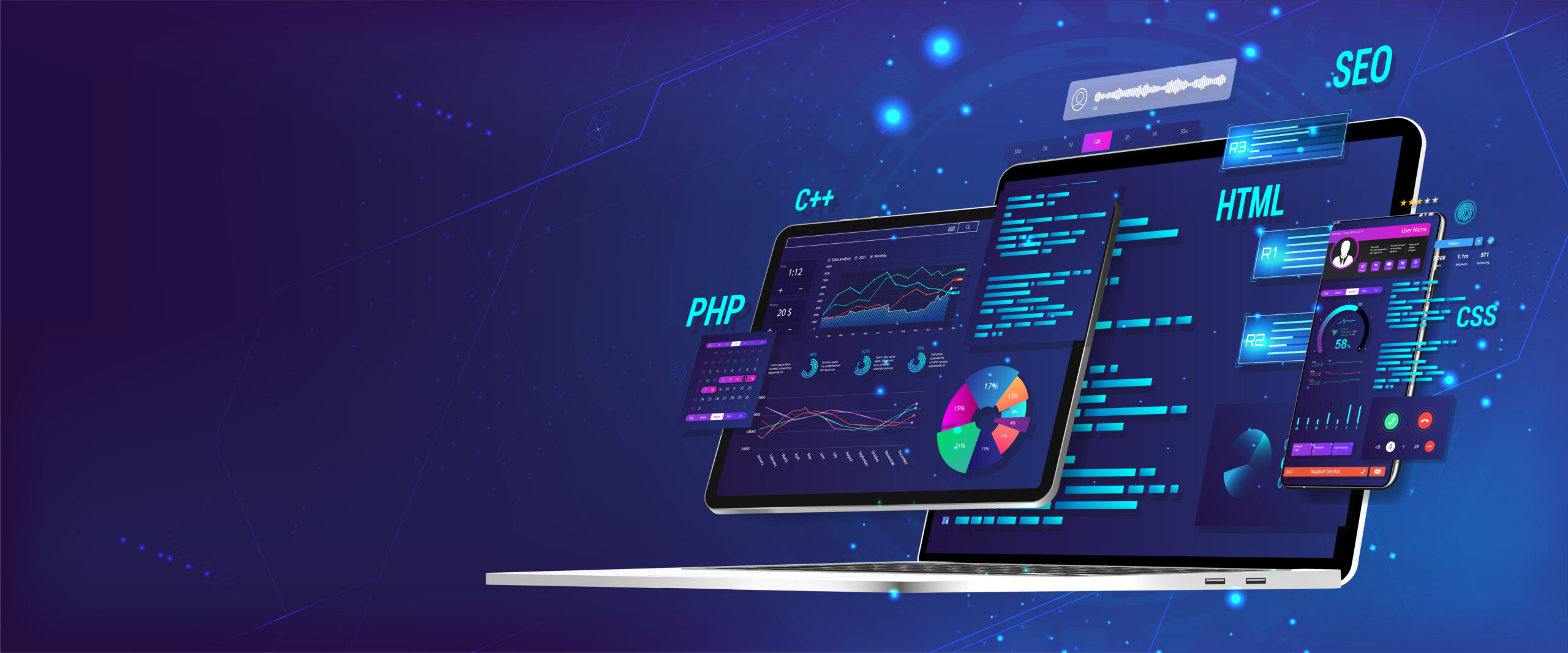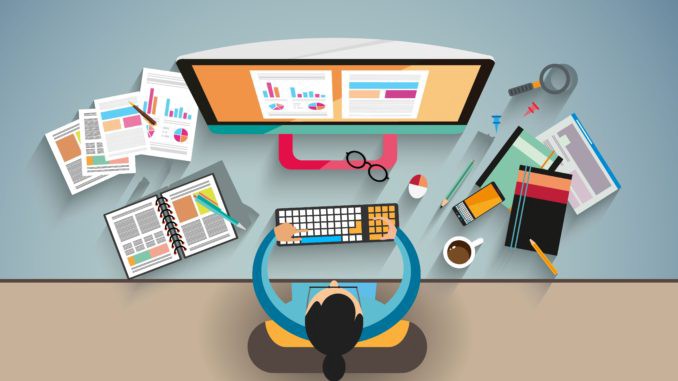Web Design London Ontario for E-Commerce and Companies
How to Effectively Integrate Visual Appeals and Performance in Internet Design
When making a site, you require to strike an equilibrium in between aesthetics and functionality. It's not simply about looking good; your design must additionally serve a purpose and guide users efficiently. By concentrating on simpleness and intuitive navigation, you can create an engaging experience. Yet what components truly enhance usability while preserving aesthetic appeal? Allow's explore the essential principles that can bring about a harmonious blend of appeal and feature.
Understanding the Relevance of Visual Appeals and Functionality
When you design a site, comprehending the balance between looks and capability is vital for producing an effective user experience. A visually enticing site grabs interest, however it's the functionality that maintains individuals involved. If your website looks excellent however is difficult to browse, site visitors will quickly weary and leave.Consider your target audience and what attracts them in. You wish to develop a layout that reflects your brand name while ensuring simplicity of use. Structured formats, user-friendly navigation, and clear contact us to activity can improve both looks and performance.

Concepts of Efficient Web Style
To create a reliable website design, you require to stick to numerous vital concepts that boost both individual experience and aesthetic charm. Initially, prioritize simpleness; a clean design helps customers navigate conveniently. Make use of a consistent color pattern and typography to preserve comprehensibility across your website. This promotes knowledge and trust.Next, assure your layout is receptive. Users access web sites on numerous tools, so your design must adjust perfectly. Take note of aesthetic hierarchy; highlight vital elements with dimension, positioning, or color to direct individuals' focus.Finally, integrate sufficient white space. It avoids mess and makes material more absorbable. Keep in mind, efficient internet layout balances looks and performance, so every style option must offer a purpose. By following these principles, you'll produce a site that's not only visually appealing but likewise user-friendly, ultimately keeping visitors involved and urging them to return.
Focusing On Customer Experience
When focusing on individual experience, you'll intend to start by understanding what your users truly require. Streamlining navigating style can make a significant difference in exactly how easily they find what they're seeking. Additionally, improving visual hierarchy aids lead their focus to one of the most essential elements on your website.
Understanding Customer Requirements
Understanding customer needs is essential for producing an engaging internet experience that keeps site visitors returning. To accomplish this, you must determine the objectives and preferences of your target audience. Begin by conducting individual research, like interviews or surveys, to collect insights on what customers worth most. Pay focus to their discomfort points and difficulties when interacting with comparable web sites. This information enables you to customize your layout, ensuring functionality lines up with individual assumptions. Additionally, think about developing customer personas that represent different sections of your target market, aiding you imagine their demands throughout the layout process. When you prioritize comprehending individual demands, you develop a website that not only looks fantastic but also delivers a seamless, pleasurable experience that promotes loyalty.
Streamlining Navigating Layout

Enhancing Aesthetic Pecking Order
A strong aesthetic pecking order is important in guiding customers via your web site and ensuring they involve with key web content. To accomplish this, use spacing, color, and dimension tactically. Make essential elements like headings larger and bolder than body message, drawing focus instantly. Make use of contrasting colors to highlight calls to activity, encouraging clicks. In addition, employ adequate white space to different sections, making material digestible and inviting.Consider the circulation of information; set up elements logically, leading users' eyes from one point to the following. Use aesthetic cues, like lines or arrows, to guide focus. By prioritizing aesthetic hierarchy, you improve user experience and enhance the chance of conversions, ensuring your internet site is both cosmetically pleasing and functionally effective.
Shade Concept and Its Effect On Use
While choosing the best shades for your site might look like a minor information, it significantly affects use and user experience. Color influences exactly how individuals regard information and can prevent or enhance navigation. Contrasting shades can aid important elements stand out, making it simpler for site visitors to discover what they need.Additionally, think about the psychology of colors: blue typically influences depend on, while red develops necessity. Recognizing your target market can lead your shade selections, assuring they reverberate well.Moreover, regular color pattern assist develop brand name identity, making your site much more unforgettable. Be cautious-- too several shades can bewilder individuals. Stick to a limited scheme that enhances your material and maintains clarity.Incorporating ease of access is also essential; validate your shade combinations are friendly for those with aesthetic problems. By attentively applying shade concept, you'll enhance usability and produce a much more appealing user experience.
Typography: Harmonizing Style and Readability
Color choices set the stage for your internet site, but typography plays a just as necessary function in boosting user experience. You desire your text to communicate clearly while additionally showing your brand's Continue personality. Beginning by picking typefaces that are not just appealing however also readable. Sans-serif typefaces commonly work well for electronic displays, as they're much easier to check out at various sizes.Maintain a hierarchy by utilizing different typeface sizes and weights; this overviews users with your content easily. Consider line spacing and letter spacing; too limited can annoy readers, while as well loosened can disrupt the circulation. Limit your font options to 2 or three to maintain the design cohesive.Finally, always examine your typography across different tools and internet browsers. What looks great on one screen may out an additional. Balancing design with readability warranties that your message resonates, keeping your audience engaged and notified.
Receptive Layout: Making Looks Work With All Gadgets
To ensure your internet site looks terrific on any type of device, you'll need to welcome receptive layout principles. This method assurances your website adapts to various screen sizes, supplying an ideal user experience. Begin by utilizing liquid grids and versatile images that scale seamlessly. As opposed to repaired dimensions, go with portions and family member devices, permitting your design to adjust dynamically.Next, execute media queries in your CSS. These allow you use different designs based upon gadget attributes, like screen width. By doing this, you can preserve aesthetic allure while ensuring functionality.Don' t ignore touch targets; make sure buttons and links are easy to tap on smaller sized displays. Focus on crucial content, so individuals can conveniently navigate your website no matter their gadget. By focusing on these aspects, you'll produce an interesting, visually appealing experience that fulfills the needs of all individuals, whether they're on a tablet computer, desktop computer, or mobile phone .
Conducting Use Screening for Continuous Improvement
To improve your web layout, you need to establish clear functionality goals that line up with customer demands. By carrying out user examinations, you can click this site gather useful feedback on just how actual individuals connect with your website. Evaluating these outcomes will aid you make informed enhancements and create a much more efficient individual experience.
Specifying Functionality Goals
While looks can attract customers in, specifying use goals is necessary for guaranteeing their experience stays enjoyable and smooth. Begin by recognizing what you desire customers to achieve on your website (website design london Ontario). Consider their habits, demands, and tasks. Are they trying to find details, purchasing, or registering for a newsletter? Establish clear standards to gauge success, like task completion rates or time on job. Prioritize user-friendly navigation, accessible material, and responsive style to enhance use. On a regular basis review these objectives as customer assumptions develop. By specifying functionality goals, you produce a structure for reviewing and improving your site's efficiency. This concentrate on usability not just boosts user fulfillment however additionally enhances the overall efficiency of your style
Carrying Out Customer Examinations
Performing user examinations is vital for improving your site and guaranteeing it meets your target market's needs. Begin by determining your target individuals and developing an examination strategy that details your goals. Make use of a mix of measurable and qualitative approaches, such as studies, meetings, and task-based observations, to collect extensive feedback. Invite individuals to browse your website while you observe their interactions and keep in mind any troubles they come across. Motivate open discussion to capture their thoughts and sensations about the layout and capability. Keep sessions short and focused, guaranteeing you cover key areas without frustrating individuals. Lastly, see to it to record all searchings for, as this info will certainly be important for making educated design choices that enhance both aesthetics and use.
Analyzing Test Outcomes
How can you efficiently evaluate the outcomes of your usability tests to drive continual improvement? Start by categorizing feedback into usual themes. Seek patterns in user habits that highlight pain points or areas for enhancement. Usage quantitative information, like task completion rates and time on task, to determine use fairly. Do not neglect to think about qualitative understandings from individual comments; they frequently reveal underlying issues that numbers can't reveal. Focus on one of navigate to these guys the most impactful findings and create workable products for your layout team. Remember, it's about iterating-- implement modifications, then examination once again. This cycle of screening, evaluating, and refining helps you balance visual appeals and capability, ensuring your website satisfies individual needs effectively while maintaining aesthetic charm.
Frequently Asked Inquiries
Exactly how Do I Choose the Right Color Palette for My Site?
To select the ideal shade palette for your site, consider your brand's character, target audience, and emotional effect (website design london Ontario). Use color psychology, create harmony, and assurance readability. Test combinations to see what resonates best with visitors
What Tools Can Help With Web Layout Visual Appeals and Functionality?
You can use tools like Adobe XD, Figma, and Lay out to boost your internet style's looks and functionality. These platforms supply instinctive interfaces, collaboration attributes, and pre-made themes to enhance your innovative process and boost your layouts.
Exactly How Can I Include Animations Without Compromising Functionality?
To include animations without compromising capability, focus on subtle results that improve user experience. Usage CSS computer animations for smoother interactions, warranty fast load times, and examination on numerous devices to maintain efficiency while adding aesthetic charm.
What Prevail Blunders to Stay Clear Of in Website Design Looks?
When developing, stay clear of messy layouts, bad shade options, and inconsistent fonts. Do not forget mobile responsiveness, as it can push away customers. Confirm your design straightens with your brand, creating a seamless experience that involves site visitors properly.
Just how Commonly Should I Update My Site's Style for Optimum Looks?
You must update your website's design every 1-2 years to maintain up with patterns and keep perfect appearances. On a regular basis restoring visuals helps engage site visitors and warranties your site remains appealing and easy to use. When you design a web site, recognizing the balance between appearances and functionality is necessary for developing an effective user experience. To produce an effective internet design, you need to adhere to a number of crucial concepts that boost both customer experience and visual charm. Individuals gain access to internet sites on various gadgets, so your design should adapt effortlessly. When focusing on individual experience, you'll desire to begin by understanding what your customers absolutely require. Beginning by performing customer study, like meetings or studies, to collect understandings on what individuals value most.